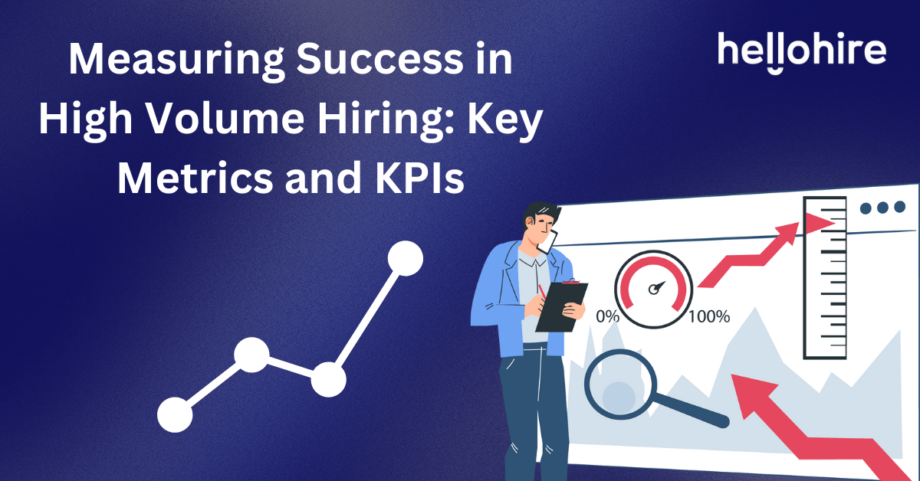Success in high volume hiring isn’t just about filling positions quickly; it’s about making strategic hires that benefit your organization in the long term. To achieve this, it’s crucial to track and measure your progress. In this blog post, we’ll explore the key metrics and Key Performance Indicators (KPIs) that organizations should monitor to assess their success in high volume hiring.
Time-to-Hire: Efficiency Matters
Metric: Time-to-Hire refers to the time it takes to fill a job vacancy from the moment the position is posted to the day the candidate accepts the offer.
Why It Matters: Reducing time-to-hire is critical in high volume hiring. A prolonged hiring process can lead to lost productivity, increased costs, and the potential loss of top talent to competitors. By tracking this metric, you can identify bottlenecks and streamline your recruitment process.
Quality of Hire: Beyond the Resume
Metric: Quality of Hire assesses the performance and impact of new hires on the organization. It can be measured through various factors, such as retention rates, performance evaluations, and employee satisfaction surveys.
Why It Matters: High volume hiring should not compromise the quality of your workforce. Monitoring the quality of hire ensures that your recruitment efforts are not just focused on quantity but also on securing candidates who contribute positively to your organization’s success.
Cost-per-Hire: Efficiency vs. Expense
Metric: Cost-per-Hire calculates the expenses associated with filling a job vacancy, including advertising, recruiter salaries, and technology costs, among others.
Why It Matters: While speed is essential in high volume hiring, it’s equally crucial to manage costs. Reducing the cost-per-hire can have a significant impact on your organization’s bottom line. This metric helps you assess the effectiveness of your recruitment budget.
Candidate Experience: A Competitive Edge
Metric: Candidate Experience evaluates how candidates perceive your recruitment process. It can be measured through feedback surveys, social media sentiment analysis, and candidate drop-off rates.
Why It Matters: A positive candidate experience not only attracts top talent but also enhances your employer brand. In high volume hiring, where you interact with numerous candidates, providing a seamless and respectful experience can set you apart from competitors.
Offer Acceptance Rate: Assessing Attractiveness
Metric: Offer Acceptance Rate measures the percentage of candidates who accept job offers.
Why It Matters: A high offer acceptance rate indicates that your organization is an attractive employer. Monitoring this metric helps you evaluate the effectiveness of your job offers and overall recruitment process.
Diversity Metrics: Promoting Inclusion
Metrics: Diversity-related metrics track the representation of underrepresented groups among hires, including gender, race, and ethnicity.
Why It Matters: Diversity and inclusion are vital in today’s workplace. By tracking diversity metrics in high volume hiring, you can ensure that your recruitment efforts are inclusive and that your organization reflects the diversity of the talent pool.
Conclusion
High volume hiring is a complex undertaking, but measuring success is essential to achieving long-term positive outcomes. By monitoring key metrics and KPIs such as time-to-hire, quality of hire, cost-per-hire, candidate experience, offer acceptance rate, and diversity metrics, you can ensure that your high volume hiring efforts are not only efficient but also effective. These metrics empower you to make data-driven decisions, refine your recruitment strategies, and secure top talent that contributes positively to your organization’s success. Remember, in high volume hiring, it’s not just about filling seats quickly; it’s about building a strong and diverse workforce that drives your organization forward.

